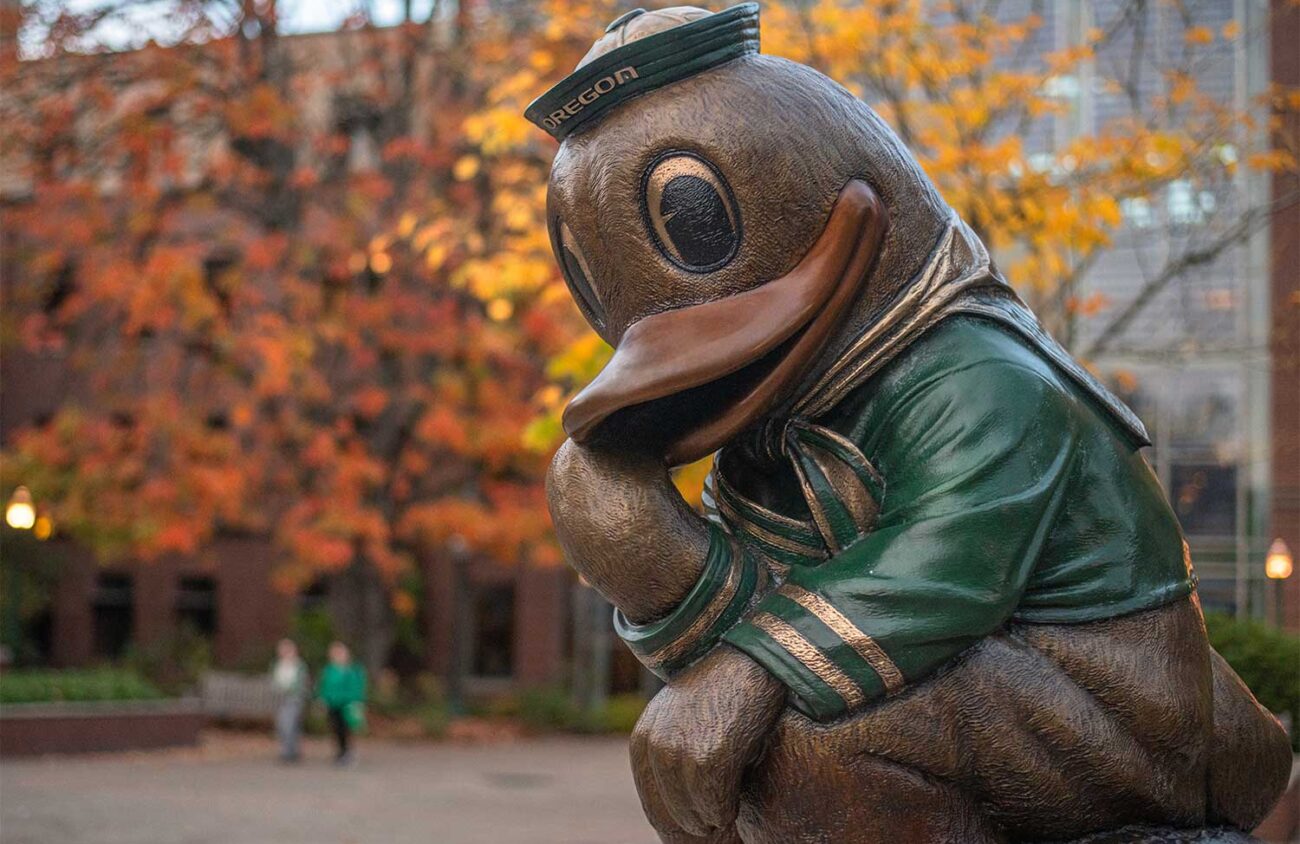The United Academics faculty union says the University of Oregon will not move an inch on salary increases after nine months of bargaining.
In response to this, UA President Mike Urbancic says the United Academics of the University of Oregon voted unanimously to establish a strike fund on Oct. 30.
Urbancic says this is in response to the university’s “lack of movement” after spending nine months at the bargaining table. “The sticking point is salary,” he says. According to UA, UO faculty salaries are the lowest out of all schools in the Big Ten conference.
Yet Oregon Ducks football is currently ranked number one, and not just in the conference, but in the nation.
“We want to be where our competitors are,” Urbancic says. To get to the average salary of what other public American Association of Universities (AAU) schools are offering, salaries need to be raised by 9.4 percent.
The average salary for a dean, provost or president at the UO is 99.4 percent of the average salary for public AAUs. But the average faculty salary is at 86 percent of the average salary for public AAU members.
However, in a Nov. 5 message sent by the UO’s Office of Human Resources to university employees, that number rises to 98.3 percent — when adjusted for retirement contributions, payroll deductions for health insurance, and cost of living.
Ten years ago, the faculty’s average salary sat at 94 percent compared to the average salary of a public AAU, Urbancic says.
Now, he says, UA negotiated down to an 8.5 percent annual raise.
Urbancic, a senior economics instructor in the College of Arts and Sciences, says the UO has not moved away from its original salary offer.
Currently, the UO is offering a 3 percent raise in 2025 to salaries across the board for all 1,800 faculty. In 2026 and 2027, those 3 percent raises become merit-based, with a pool for each department and school. Essentially, Urbancic says, faculty will need to compete with each other to get a sliver of that 3-point pie within their department.
According to the previous collective bargaining agreement, in 2022 and 2023, 3 percent raises were offered across the board, while in 2024, only a merit-based 3 point shared-pool was offered.
“This system that we have where it ends up being sort of this occasional blood sport where you’re just clawing at each other trying to get more does a great disservice to faculty,” Urbancic says.
UA will not go any lower than an 8.5 point raise, Urbancic says. “Their current financial situation allows them to do what we’ve asked them to do,” he says of the UO.
However, in the UO HR email, Senior Director of Employee and Labor Relations Chris Meade writes that UO financial resources are “finite.”
“Our revenue model is constrained in a very competitive market. The UO has a much higher dependency on student enrollment and tuition than other AAU public universities because it only receives 37 percent of the state funding per student average of public AAU institutions,” Meade writes.
When asked for comment, the University of Oregon’s assistant director of Issues Management, Eric Howald, directed all inquiries to the university’s HR website.
While salary concerns rise to the top, Urbancic says faculty working conditions are also a major sticking point — and they’ve deteriorated significantly since the COVID-19 pandemic. “Our working conditions are student learning conditions,” he says.
UA is requesting the UO allow for professional development time — time for faculty to educate themselves, attend conferences and specifically learn how to educate students in a post-pandemic world.
“We just built the Knight Campus. We are allocating funds to build our research profile on campus,” UA Operations Director Kristy Hammond says. “But we are not, as a university, willing to support the researchers who do the actual work. And that is an absolute disgrace,” she says.
The UO has not moved on its original position — no professional development time, Hammond says.
UA is also asking the university to support its grant-contingent staff more consistently. For example, if grant-funded faculty members lose their grants, they will be let go after a 30-day period. The UA is asking that be extended to 90 days. A grant-funded faculty member is someone who receives all their research funding through grants.
UA is also requesting the university provide a bridge funding pool to close the gaps between grants. If someone lost their grant funding, UA is asking the UO to supplement that lost grant with its own funding.
The UO has never budged on this, Hammond says.
Hammond says that the UO is unwilling to meet the union halfway. “We have moved,” she says. “The university has moved a lot less.”
On Wednesday, Nov. 13, UA will begin its 18th session of bargaining out of 20 total. Afterward, a mediation period of 15 days will begin, statutorily required by the Public Employees Collective Bargaining Act (PECBA).
After voting to unanimously establish the strike fund at a UA general meeting — the largest Hammond says she’s seen since joining the staff a decade ago — over 600 UA members signed onto a letter supporting the bargaining team.
This letter was delivered to the UO on Nov. 13, coinciding with a rally at noon for UA on the steps of Johnson Hall — the main administrative building on UO’s campus.
“We are a campus that is driven off of union labor, and the university needs to go ahead and remember that we have needs,” Hammond says.To learn more about UA’s bargaining efforts, go to UAUOregon.org/bargaining.
